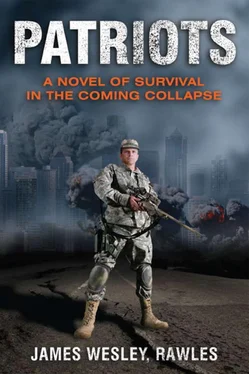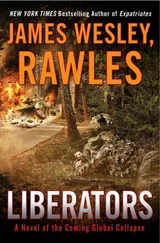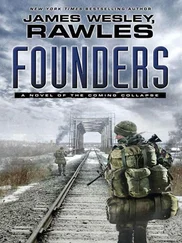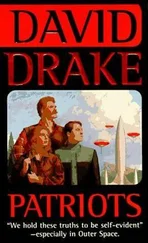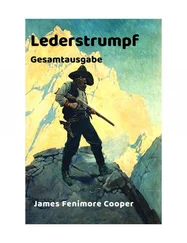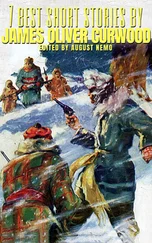“You’ve probably heard the shortwave ‘pirate’ stations like Radio Free America and The Intelligence Report that run at around 6955 and 7415 KHz at night, and higher freqs during the day. And, you’ve probably wondered why the Feds haven’t shut them down. It’s because the Federals can’t DF them, so they don’t have a clue where they are located. You see, those signals are coming from deep inside rebel-held territory, and the Feds are intercepting them via sky wave . It must be driving the Feds nuts. I guess that’s why they try to jam them so much.
“Back before the Crash, the NSA had some pretty sophisticated HF-DF equipment back at Fort Meade, and the Army had a one-of-a-kind system called Track Wolf. It was made by a company called TCI down in Fremont, California. They used chirp sounders to judge the conditions of the ionosphere, and some pretty sophisticated algorithms to make sense of near vertical incidence sky waves. Track Wolf, for example, depended on two out-stations along a thousand-mile long baseline to generate useful cuts for HF-DF. Pretty sophisticated stuff. But, to the best of my knowledge, those systems aren’t operating today. If they were, the Feds would have already used what’s left of their ragtag air force to fly into rebel territory and bomb those transmitter sites.
“Most of the two-way equipment out there is Very High Frequency—VHF. VHF operates almost strictly ground wave—or line of sight—and is very vulnerable to DF.”
The XO jotted down on his notepad:
HF Sky wave - No DF
HF Ground wave - Can be DFed!
VHF (All ground wave) - Can be DFed!
“There are lots of civilian two-meter hand-talkies. Of course, the old networks of two-meter repeater stations are long since gone, but those radios still work great in line of sight. Some of the hand-talkies and a lot of the old in-dash rigs are frequency agile .”
The XO cocked his head and blinked, so Edgar explained, “When they came from the factory, the two-meter radios could receive all the way from 118 to 170 megahertz but because of FCC regulations, they could transmit from just 144 to 148 megahertz. However, before the Crash, a lot of hams not so legally modified their hand-talkies to transmit all the way from 140 to 170 megahertz! This was an almost standard job, done with the snip of a diode and reprogramming the EPROM, using the radio’s keypad.
“The frequency agility mod can be done on ICOMs, Yaesus, Kenwoods, Alincos, and Azdens, for example, but not the later Radio Shack models. Those darn ‘Rat Shack’ hand-talkies made from the early ’90s onward are not frequency-agile with just the snip of a diode. They intentionally designed them so the frequencies couldn’t be opened up. Oh well. The bottom line is that probably more than half of the two-meter rigs out there before the Crash were frequency agile, and even more now that there is no FCC to worry about.
“You can do a similar mod to some CBs. I have a Cobra 148 that I modified to 26.815 megahertz to 28.085 megahertz. Most of the later CBs have surface mount components and therefore they can’t be modified, but the older ones can be modified fairly easily. When you operate out of band, you can run into antenna length and tuning problems. Antennas are, of course, optimized for certain wavelengths. When you go too high or too low in frequency, you can get a standing wave ratio that is too high—sometimes over one-point-three-to-one. That’s exacerbated when you are operating mobile—from a vehicle—because you are probably already running quarter wave or less. Even with the bad Standing Wave Radio (SWR), things will work, but just not efficiently; one important proviso. If you’re going to operate out of band, never use a linear amplifier. With a wacky SWR, you are liable to burn up your linear amp. But that’s probably neither here nor there for anyone in our current situation. The whole idea is to keep your electronic signature small. Try to operate with the minimum effective radiated power. Running power is suicide, these days. Keep your radiated power low.
“Speaking of CBs, you should try and locate a Uniden President HR 2510. This is a ham radio that you can modify to transmit and receive in the citizen’s band range. You can open this model up all the way from 26 to 30 megs. It has a frequency counter that you can finetune down to 10 kilohertz. The CB band is a curious animal, you see. There are a few dead business channels such as 27.195 megahertz—between channel 19 and channel 20—that your average CB can’t receive. Nor can they receive the out-of-band freqs that are just above and just below the forty regular CB channels. This makes for some interesting possibilities if you have the right equipment. There’s one drawback, though. Uniden stopped making the HR 2510 back around 1992. If you looked around a bit before the Crash, you could find brand new ones or slightly used ones at CB shops. Back then they cost any where from $250 to $450, so they weren’t for the budget-minded. Lord knows where you’d find one now, but keep your eyes peeled, you might get lucky. When peaked tuned, a HR 2510 can pump out thirty-five watts AM, and forty-two watts single sideband. But again, what you want these days is minimum ERP.”
Scheimer scribbled notes down furiously.
“By the way, the common cellular telephones can be modified to talk unit-to-unit on fixed frequencies within their normal 800 megahertz band.”
“You can even have fun with unmodified hand-talkies. Just operate a pair at offset frequencies. For example, radio number one is set to transmit at 144.9725 and receive at 148.025. Radio number two is set for the reverse. Thus, the average listener gets only half of the conversation. The downside is, of course, that only two radios, or teams, can actively use a radio this way, and a team can’t communicate among itself this way, since their radios are only set to contact the other team. This is even more fun in a modified dual-bander. For example, a Kenwood TH-79A, once modified, runs essentially 136-to-174 megahertz and 410-to-470 megahertz. The factory original transmit specs are 144-to-148 and 438-to-450 megs. So if you play the cross band offset game, the two halves of the conversation can be separated by nearly 300 megahertz. Not too much risk of somebody hearing both sides of that conversation.
“Another trick is to operate AM on frequencies where FM is the norm. Anyone listening in the FM mode will only hear garbage and noise. However, AM radios can be off-tuned to an FM signal, allowing the AM detector to ‘slope-tune’ the FM transmissions. That enables reasonable listening clarity.
“So much for civilian hardware. Most of the enemy tactical gear you’ll run across is VHF, which means it operates line of sight, and it is frequency modulated. There are a lot of frequency-hoppers, but from what we’ve determined, they are all being operated at fixed frequency. There is also a lot of encryption gear, but it is not being utilized. It appears that the expertise on how to do things, like precise time synchronization from a net control station, or remote injection of encryption keys from a net control station, no longer exists in most units. They’ve formed a lot of these units from scratch, so the collective memory, at least on the more arcane and high-tech topics, was lost.
“They also are very slow to replace their CEOIs, and in some cases they use simple letter-for-letter transposition ciphers. I guess they feel invulnerable to decryption because they have Green Hornet decoder rings. Any schoolboy can crack a transposition cipher. We’ve been using all of these amateur factors to our advantage. Because they use their radios so much more than we do, we actually have a better Comint-derived intelligence picture of what is going on than the Federals.
Читать дальше
